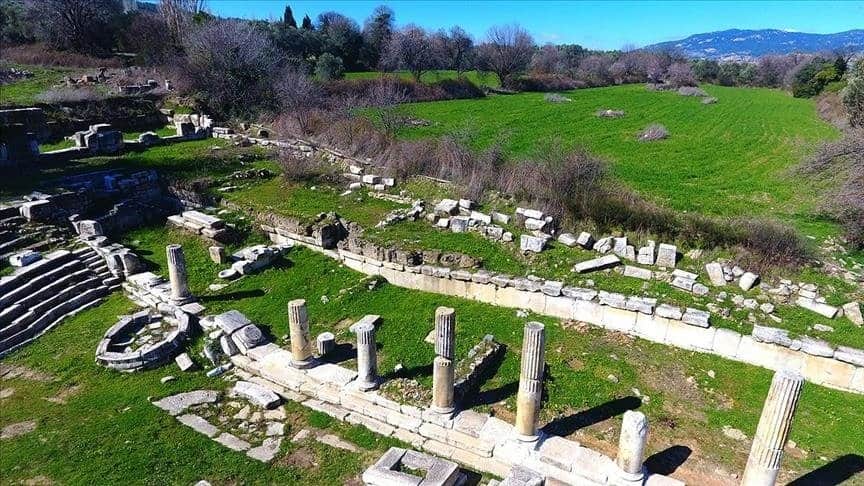
Unearthed columns in the 2,050-year-old Lagina Hecate Sanctuary, once a center of paganism in southwestern Turkey, have been restored and have risen again.
The Temple of Hecate in the Sanctuary of Hecate at Lagina in Caria (modern-day Turkey is dated to the last quarter of the 2nd century CE. It measured 21m x 28m and was built in the Corinthian order with 8 columns on its shorter sides and 11 columns on its longer sides. Lagina was one of the most important Carian sanctuaries.
"We are happy to repair the columns and to put them back in their places that were set up here 2,050 years ago,” said Bilal Sogut, a leader of the excavation team, as he noted the group is working in areas where people were protected from the sun in summer and rain in winter in ancient times.
Sogut pointed out that the temple was built in the name of Hecate, an important goddess of the period, in Lagina, and was a religious center of Stratonikeia Ancient City, located 8.5 kilometers (5.28 miles) from Yatagan district in Mugla.
The Athenian Greeks honoured Hekate during the Deipnon. In Greek, deipnon means the evening meal, usually the largest meal of the day.
Hekate's Deipnon is, at its most basic, a meal served to Hekate and the restless dead once a lunar month on the night when there is no visible moon, usually noted on modern calendars as the new moon.
The Deipnon is always followed the next day by the Noumenia, when the first sliver of moon is visible, and then the Agathos Daimon the day after that .
The main purpose of the Deipnon was to honour Hekate and to placate the souls in her wake who “longed for vengeance.”
A secondary purpose was to purify the household and to atone for bad deeds a household member may have committed that offended Hekate, causing her to withhold her favour from them. The Deipnon consists of three main parts: the meal that was set out at a crossroads, usually in a shrine outside the entryway to the home an expiation sacrifice, and purification of the household.
He said the dig has continued for 12 months in the sanctuary and all architectural blocks are revised where they used to belong.
“Visitors will now be able to see these columns as they were 2,050 years ago. The columns are now standing in the sanctuary where a ceremony was held in the name of the goddess Hecate in ancient times,” he said.
He underscored that the biggest temple that was built in the name of Hecate is also there and a fourth gate was unearthed in the ancient city, It was known to have three gates.
Artifacts from the region are exhibited in the Istanbul Archeology Museum and Mugla Museum.

